Wild pigs are among the most fascinating and widespread mammals on Earth. Found across nearly every continent, these intelligent and adaptable creatures thrive in forests, grasslands, mountains, and even deserts. With over two dozen distinct species and subspecies, each has its own unique appearance, behavior, and ecological role.
In this identification guide, we’ll explore 30 types of wild pigs from around the world — from the powerful Eurasian Wild Boar to the brilliantly colored Red River Hog of Africa. Whether you’re a wildlife enthusiast, student, or curious reader, this guide will help you identify, understand, and appreciate the diversity of wild pigs that roam our planet.
1. Eurasian Wild Boar (Sus scrofa)
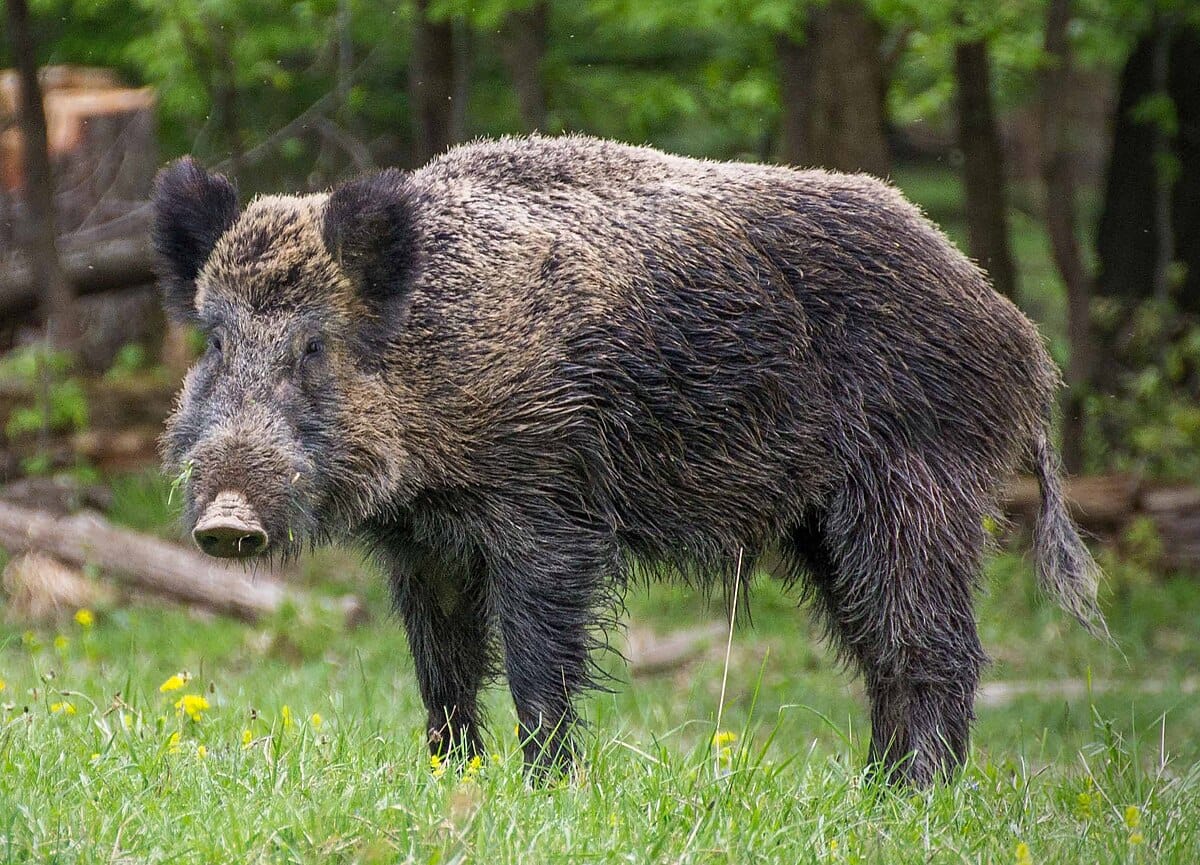
The Eurasian Wild Boar is the undisputed ancestor of all domestic pigs. This species has the widest range of any wild pig, stretching from Western Europe through Asia and into North Africa. Its ability to adapt to diverse climates — from icy Russian forests to Mediterranean scrublands — makes it one of the most resilient mammals alive.
Identification
The Eurasian Wild Boar has a muscular build, a long, coarse coat of brown to black fur, and a distinctive wedge-shaped head. Adult males can weigh up to 300 kg (660 lbs), while females are smaller and more slender. Their sharp tusks — used for digging and defense — grow continuously throughout life.
Habitat and Range
These boars prefer woodlands and mixed forests with nearby water sources. However, they are also found in agricultural areas where food is abundant. Because of their adaptability, they’ve been introduced — intentionally or accidentally — to many regions, including North America and Australia.
Behavior and Diet
Wild boars are omnivores with a keen sense of smell. They dig for roots, bulbs, insects, and small animals, playing an important role in soil aeration. Socially, they live in family groups called sounders, typically made up of females and their young. Adult males are more solitary except during the mating season.
Interesting Fact
Their intelligence rivals that of dogs, with studies showing strong problem-solving and memory skills. This adaptability is one reason wild boar populations continue to thrive even in human-dominated environments.
2. Feral Hog (Sus scrofa domesticus)
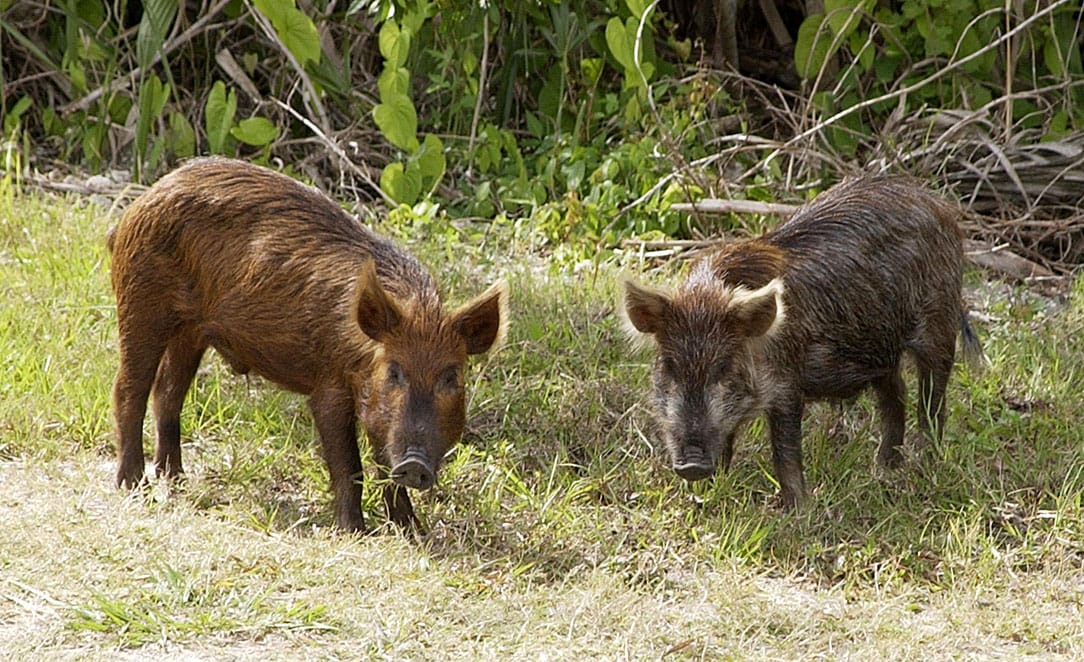
The Feral Hog, sometimes called the feral pig or wild hog, is a domestic pig that has returned to the wild. While genetically close to the Eurasian Wild Boar, feral hogs often exhibit mixed traits due to centuries of domestication and hybridization.
Identification
Feral hogs vary widely in color — from black and gray to spotted or reddish — depending on their ancestry. Their bodies are stocky with thick bristles, shorter snouts, and less prominent tusks than true wild boars.
Habitat and Range
They thrive in diverse environments — forests, wetlands, farmlands, and even urban outskirts. Feral hogs are now found in parts of the U.S., Australia, New Zealand, and South America, where they are considered invasive species due to their destructive rooting behavior.
Behavior and Diet
Highly opportunistic, feral hogs feed on plants, roots, crops, carrion, and small vertebrates. Their rooting can devastate ecosystems and farmland, causing billions in agricultural losses each year. They also compete with native wildlife for food and water.
Interesting Fact
Despite their reputation as pests, feral hogs are ecologically fascinating examples of re-wilding — showing how quickly domesticated animals can revert to wild survival instincts within a few generations.
3. Bushpig (Potamochoerus larvatus)

The Bushpig is a striking and elusive wild pig native to sub-Saharan Africa. With its vivid coloration, fierce temperament, and nocturnal habits, it’s one of Africa’s most intriguing species.
Identification
Bushpigs are medium-sized, with reddish-brown coats that may darken with age. Their faces feature white tufts of hair and a distinctive mane along the spine. Males develop small, curved tusks — used for digging and defense — though these are less visible than those of warthogs.
Habitat and Range
They prefer dense forests, thickets, and wetlands where cover is abundant. Their range extends from South Africa through East Africa to parts of the Congo Basin. Bushpigs often inhabit regions near farms, where they raid crops like maize and sugarcane under cover of night.
Behavior and Diet
Bushpigs are highly social and live in groups called sounders, typically led by a dominant female. They are omnivores that feed on roots, fruits, insects, small mammals, and carrion. Despite their secretive nature, they’re known for their courage — often charging when threatened.
Interesting Fact
Bushpigs communicate through low grunts and squeals and use mud wallowing not only to cool off but to mark territory. Their tough hide and fearless behavior make them formidable opponents to predators like leopards.
4. Red River Hog (Potamochoerus porcus)

Arguably the most colorful wild pig in the world, the Red River Hog is a showstopper. Native to the rainforests and savannas of West and Central Africa, this species is admired for its stunning orange-red coat and striking facial markings.
Identification
The Red River Hog’s vibrant reddish fur, contrasting white facial stripes, and tufted ears make it unmistakable. Both sexes have small tusks, but males also sport facial warts. They’re relatively small compared to wild boars, weighing around 45–120 kg (100–265 lbs).
Habitat and Range
They inhabit rainforests, swamps, and gallery forests, usually near water sources. Their range extends across Gabon, Cameroon, and the Congo Basin. Red River Hogs are excellent swimmers and can cross rivers effortlessly in search of food.
Behavior and Diet
Mostly nocturnal, they live in herds led by a dominant male. They feed on roots, fallen fruits, invertebrates, and small vertebrates. Their strong snouts are perfectly adapted for digging through soil and decaying wood.
Interesting Fact
Locals in some African cultures consider them symbols of fertility and strength. Their natural camouflage and cautious nature make them hard to observe in the wild, adding to their mystery.
5. Warthog (Phacochoerus africanus)
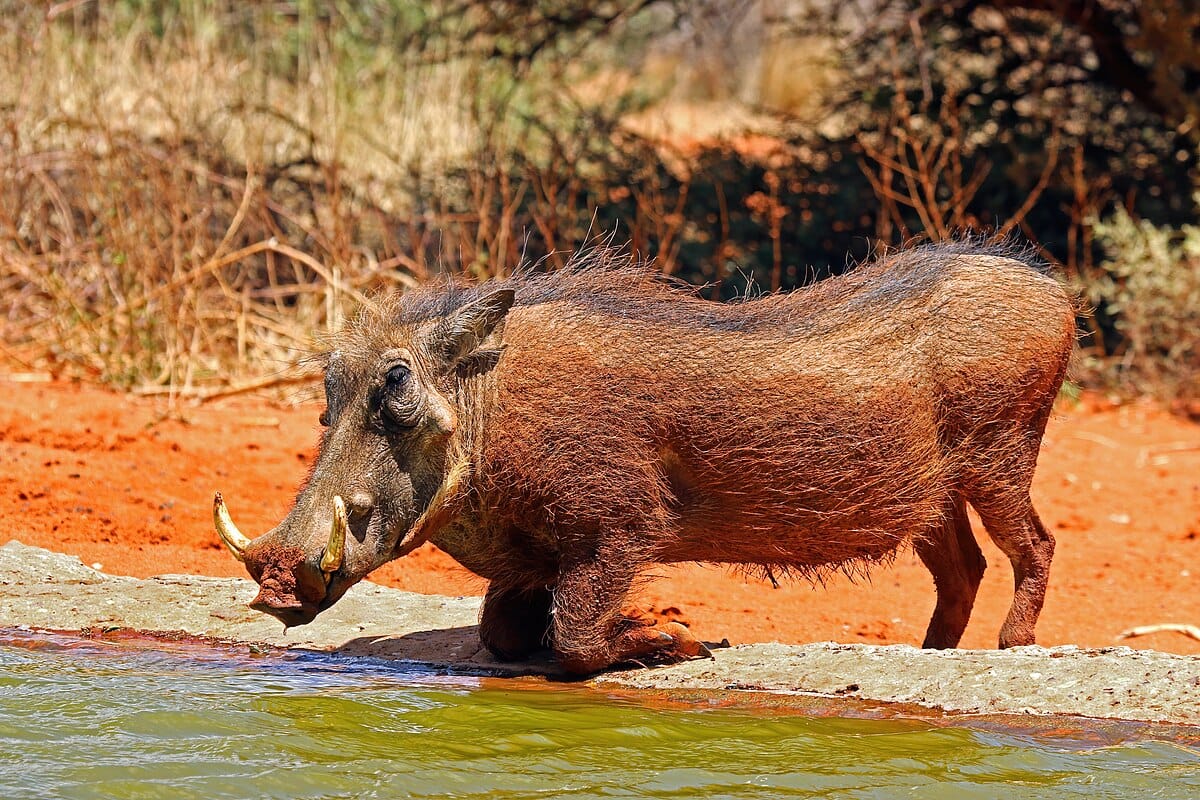
The Warthog is perhaps Africa’s most recognizable pig, easily identified by its facial “warts” and impressive tusks. Despite their rugged looks, warthogs are highly intelligent and remarkably resilient animals.
Identification
Warthogs have sparse gray skin, a mane of coarse hair, and prominent warts — thick skin growths that act as protection during fights. Their upward-curving tusks can grow up to 25 inches long and are used for defense against predators.
Habitat and Range
They live in savannas, grasslands, and open woodlands across sub-Saharan Africa. Warthogs prefer areas with burrows for shelter, often repurposing abandoned aardvark holes.
Behavior and Diet
Unlike other pigs, warthogs often kneel while feeding, using their padded knees to graze on grasses and roots. They are diurnal and rely on keen vision to detect predators. Socially, females and young form sounders, while males are more solitary.
Interesting Fact
Despite their tough appearance, warthogs are quick and agile. When threatened, they can sprint up to 50 km/h (30 mph) and will back into burrows tusks-first — ready to fight off lions or hyenas.
6. Desert Warthog (Phacochoerus aethiopicus)
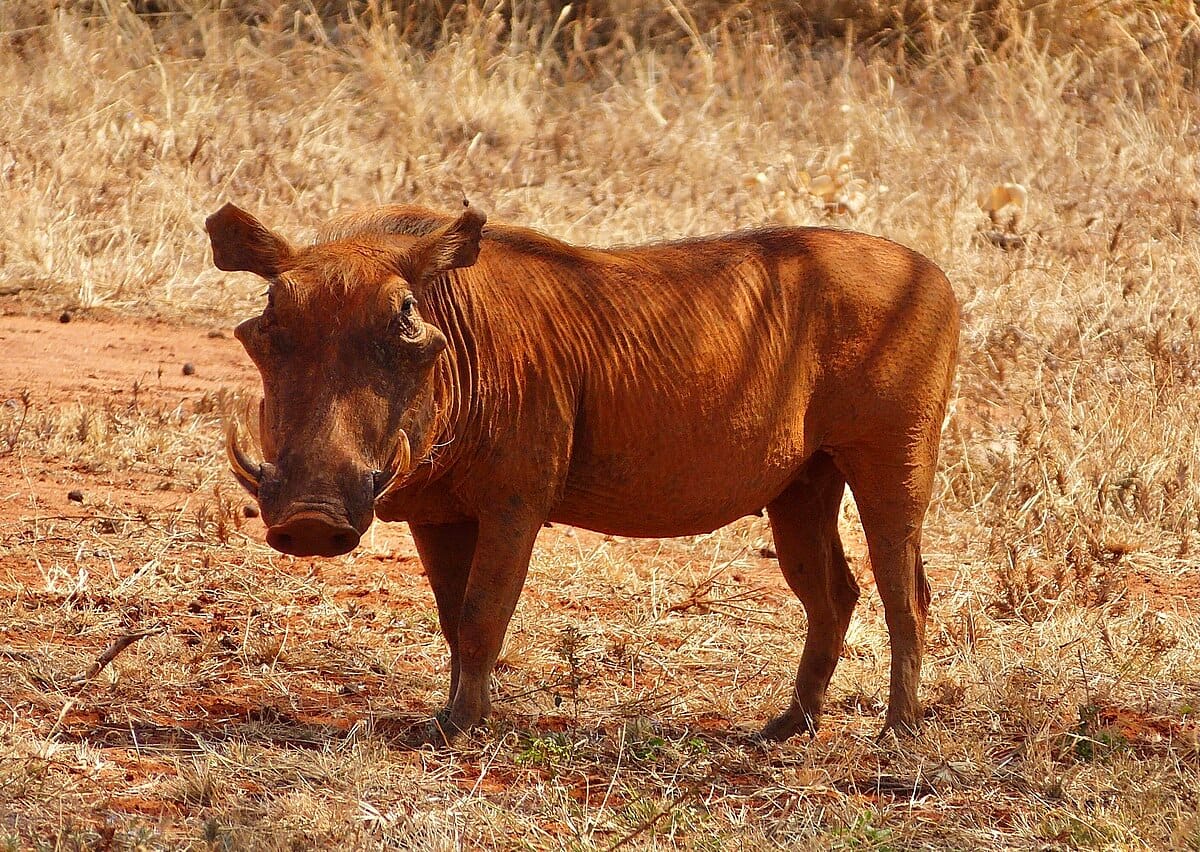
The Desert Warthog is a lesser-known cousin of the common warthog, found in the arid regions of the Horn of Africa. Despite living in some of the toughest environments on Earth, this species has evolved remarkable adaptations that help it survive where few large mammals can.
Identification
At first glance, the Desert Warthog looks much like its more famous relative, but closer inspection reveals subtle differences. Its face is longer, with smaller tusks and distinct warts. The skin tends to be grayer and less hairy — a natural adaptation to hot, dry climates. Its ears are more pointed, and the snout is flatter, giving it a slightly leaner appearance.
Habitat and Range
Desert Warthogs inhabit the dry scrublands, rocky plains, and open savannas of Somalia, Ethiopia, and northern Kenya. Unlike common warthogs, they are rarely seen near water. Instead, they obtain most of their moisture from roots and tubers.
Behavior and Diet
These hardy pigs are primarily diurnal and graze early in the morning or late in the afternoon to avoid the harsh midday sun. They feed on grasses, roots, and bulbs, using their strong snouts to dig in hard, dry soil. Desert Warthogs live in small family groups and often occupy burrows, just like their savanna cousins.
Interesting Fact
Scientists once believed the Desert Warthog was extinct, only rediscovering it in the 1990s. Its resilience and elusive nature make it one of Africa’s most fascinating comeback stories.
7. Bearded Pig (Sus barbatus)
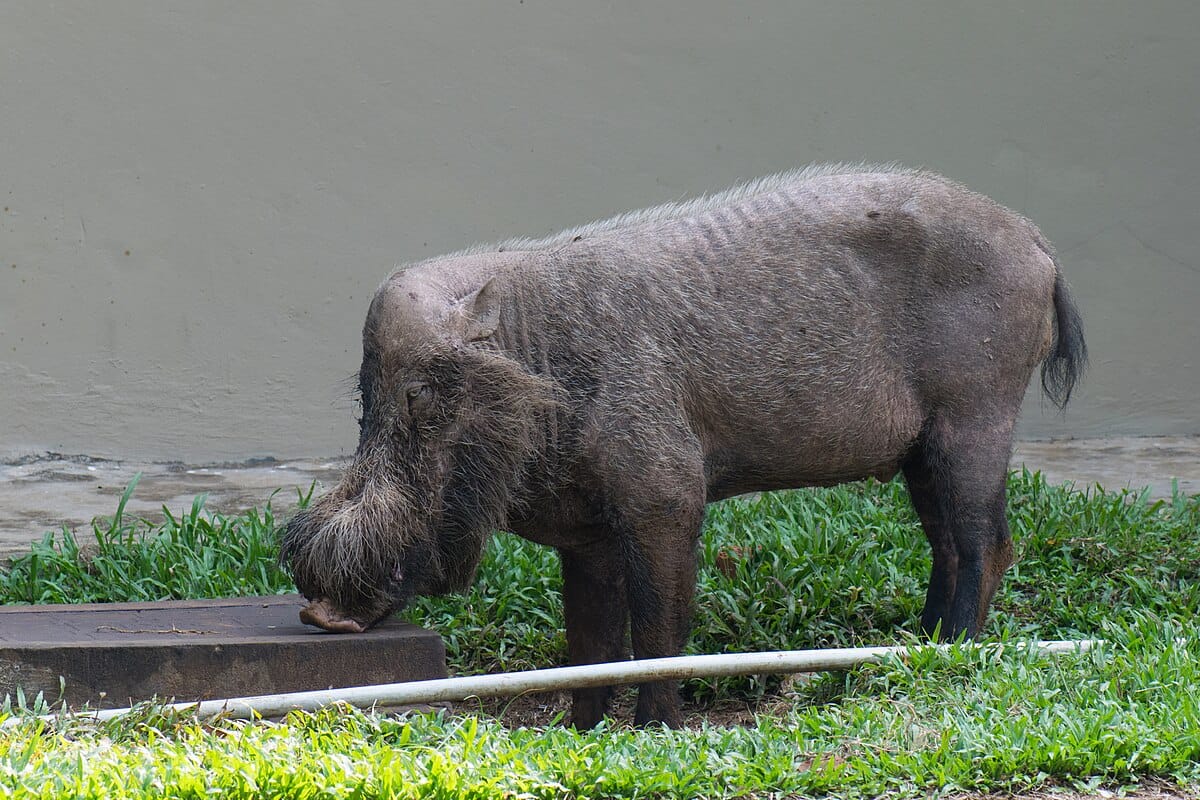
The Bearded Pig is one of Southeast Asia’s most iconic wild pigs, easily recognized by its long facial hair and elongated snout. Native to Borneo, Sumatra, and parts of the Malay Peninsula, this species plays a vital role in tropical ecosystems.
Identification
True to its name, the Bearded Pig sports a distinctive “beard” — long bristles that grow from the sides of its face and jawline. Its body is slender with grayish-brown fur and a characteristic white band along the muzzle. Males are generally larger, weighing up to 150 kg (330 lbs).
Habitat and Range
This species thrives in dense rainforests, mangroves, and coastal swamps. In Borneo, large herds undertake seasonal migrations following fruiting cycles — a spectacle that few mammals exhibit. These movements help disperse seeds across vast forest areas, aiding regeneration.
Behavior and Diet
Bearded Pigs are omnivores, feeding mainly on fruits, fallen nuts, roots, and small invertebrates. They often forage in family groups, and their social calls — low grunts and squeals — can be heard echoing through the jungle at night. Despite their size, they are agile swimmers and climbers.
Interesting Fact
The Bearded Pig’s migration can stretch over hundreds of kilometers. Scientists believe this ancient behavior evolved as a strategy to follow seasonal food sources across fragmented island habitats.
8. Palawan Bearded Pig (Sus ahoenobarbus)
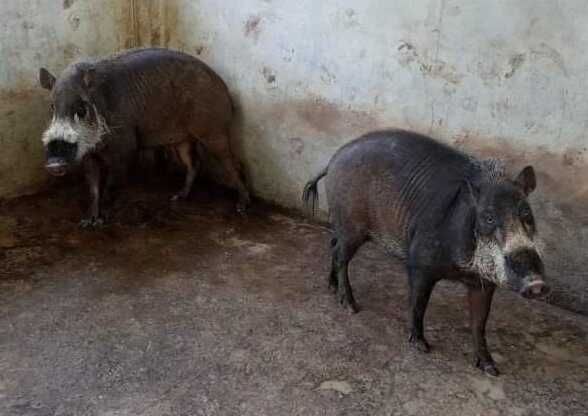
The Palawan Bearded Pig is a lesser-known but equally fascinating member of the bearded pig family. Native only to the Philippine island of Palawan, it’s a rare example of island evolution, showing how isolation shapes distinct physical traits over time.
Identification
Smaller than the mainland Bearded Pig, the Palawan Bearded Pig has a dark brown coat, coarse bristles, and a short but noticeable beard-like tuft. Males often have more pronounced whiskers, giving them a rugged appearance. The species’ relatively short snout and compact body help it move easily through dense undergrowth.
Habitat and Range
This pig lives in tropical forests, grasslands, and coastal mangroves of Palawan and nearby islands. It prefers areas with plenty of cover and access to fruits, roots, and small invertebrates. Sadly, deforestation and hunting have severely reduced its range.
Behavior and Diet
The Palawan Bearded Pig is primarily nocturnal, emerging at dusk to forage. It eats a variety of forest fruits, nuts, and even small animals. Unlike some other species, it is known to live in smaller family units rather than large herds.
Interesting Fact
Local legends in Palawan often depict this pig as a spirit guardian of the forest — a symbol of resilience and survival. Conservation efforts are now underway to protect this species, which is threatened by habitat loss.
9. Javan Warty Pig (Sus verrucosus)
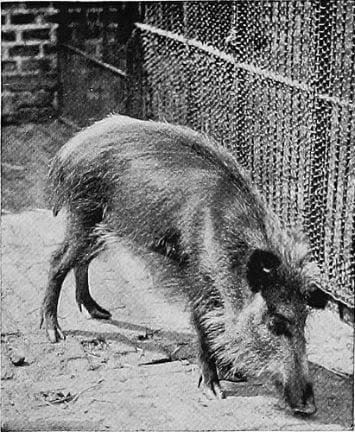
The Javan Warty Pig is one of the rarest wild pigs in the world. Native to the Indonesian island of Java, it is critically endangered, with only a few fragmented populations remaining. Its unique facial warts give it a prehistoric look that sets it apart from other wild pig species.
Identification
This species is medium-sized, with a dark gray to black coat and three pairs of facial warts — one near the eyes, one on the snout, and one along the jawline. Males grow a mane of long, coarse hair along the back during the breeding season, making them appear larger and more intimidating.
Habitat and Range
Javan Warty Pigs inhabit dry forests, grasslands, and coastal scrublands. Once widespread across Java, they are now confined to protected reserves due to hunting and agricultural expansion.
Behavior and Diet
These pigs are primarily nocturnal and extremely shy. They forage for roots, fallen fruits, and tubers but will also scavenge small animals or carrion when available. During the dry season, they dig for water sources using their strong snouts — a survival behavior that helps them endure droughts.
Interesting Fact
Because they are so elusive, the Javan Warty Pig was thought extinct until being rediscovered in 2008. Conservationists now consider it one of the most endangered mammals in Southeast Asia.
10. Celebes Warty Pig (Sus celebensis)
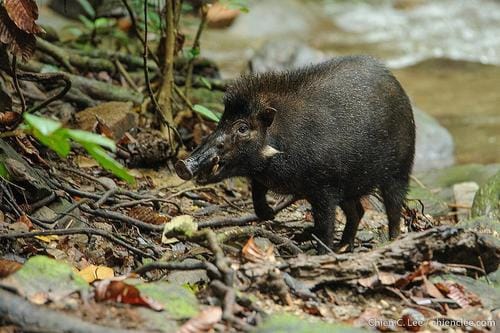
The Celebes Warty Pig, also known as the Sulawesi Warty Pig, is another island-dwelling species that highlights the incredible diversity of Indonesia’s wild pigs. Adapted to the forests of Sulawesi, this species has unique social and physical traits not found in its mainland relatives.
Identification
Celebes Warty Pigs are smaller and darker than other warty pigs, with two noticeable facial warts and a tufted crest of hair on the head. Males often have more prominent warts and longer manes, especially during mating season. Their short legs and compact bodies are built for navigating steep, forested terrain.
Habitat and Range
They live across Sulawesi and nearby islands, occupying tropical forests, agricultural areas, and mountain slopes. Despite habitat loss, they remain relatively widespread due to their adaptability and ability to coexist with humans.
Behavior and Diet
These pigs are omnivorous, eating fruits, roots, worms, and even small reptiles. They are primarily nocturnal and live in small family groups. Unlike some other wild pigs, Celebes Warty Pigs are more vocal and communicate through grunts and squeals to coordinate movements within dense forests.
Interesting Fact
In ancient Sulawesi cave art — some of the oldest known in the world — depictions of warty pigs have been found dating back over 45,000 years. This makes the Celebes Warty Pig possibly the first animal ever painted by humans.
11. Visayan Warty Pig (Sus cebifrons)
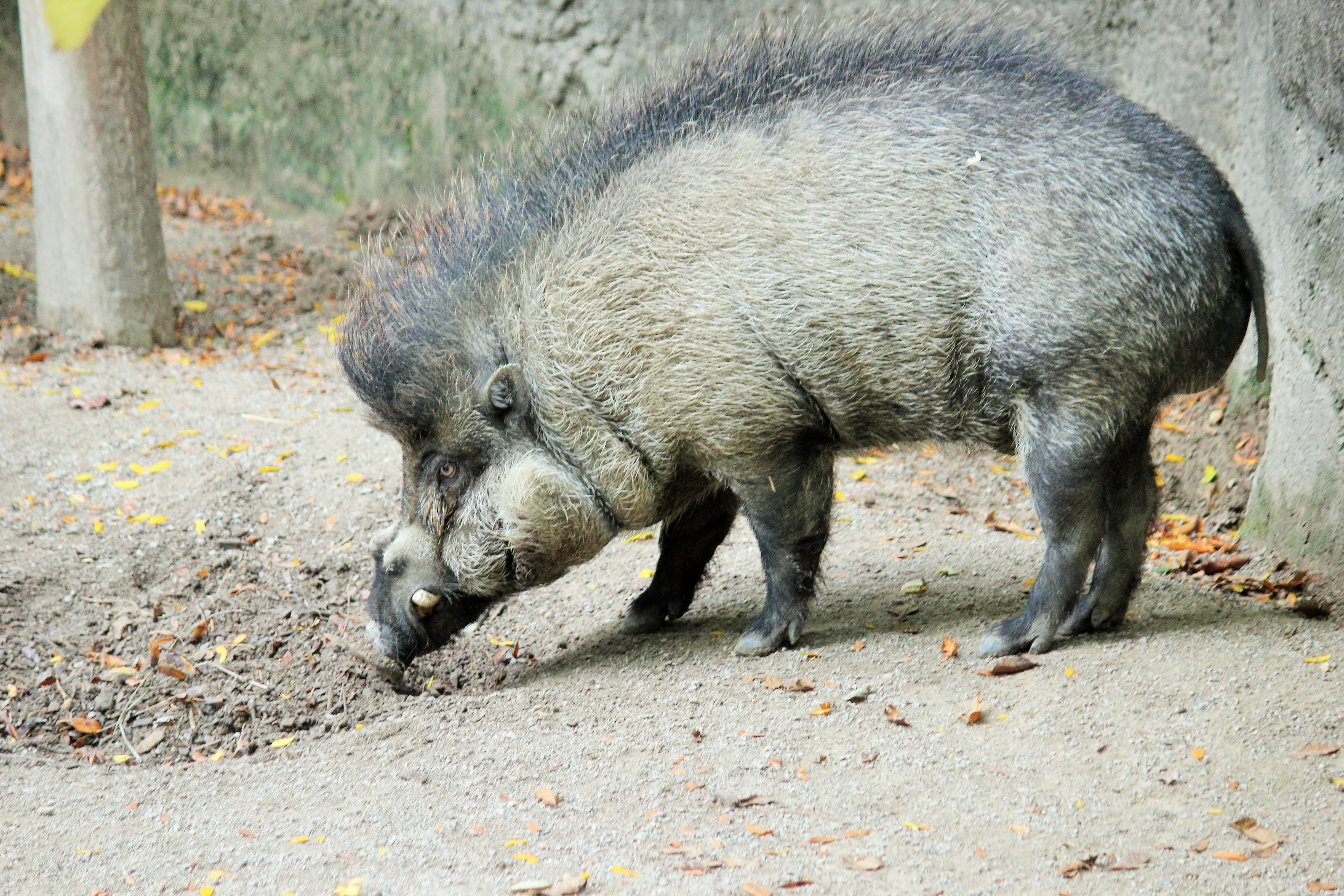
The Visayan Warty Pig is one of the most endangered and unique wild pig species in the world. Found only on a few islands in the central Philippines, this species has become a symbol of conservation efforts in Southeast Asia.
Identification
The Visayan Warty Pig is medium-sized with coarse, dark gray hair and a thick mane that can stand upright during the breeding season. Males display three pairs of distinctive facial warts and longer bristles that make them look larger and more imposing. Their tusks are shorter but sturdier compared to those of mainland species.
Habitat and Range
This pig once roamed throughout the Visayan Islands but is now restricted to a few forest patches on Panay and Negros. Deforestation and hunting have pushed it to near extinction. These pigs thrive in tropical forests, grasslands, and areas near rivers where food is plentiful.
Behavior and Diet
Visayan Warty Pigs are primarily nocturnal foragers. Their diet includes roots, fallen fruits, tubers, and occasionally small vertebrates. They use their snouts to dig up soil in search of food, which also helps aerate and enrich the forest floor — a small but important ecological service.
Interesting Fact
During breeding season, the males’ manes can grow so thick and long that they resemble mohawks — a feature that once inspired local legends about “forest spirits.” Today, the Visayan Warty Pig is protected by Philippine law and several captive breeding programs are underway to ensure its survival.
12. Philippine Warty Pig (Sus philippensis)

Closely related to the Visayan species, the Philippine Warty Pig inhabits the northern islands of the Philippines, including Luzon. It’s another excellent example of how island isolation gives rise to distinct evolutionary traits.
Identification
This wild pig has a coarse black coat with a lighter underbelly. Males develop two facial warts on each side of the snout and a short mane that becomes more prominent during mating season. Compared to other warty pigs, this species is smaller and more compact.
Habitat and Range
It lives in dense tropical forests, mountain slopes, and areas of secondary growth. However, like many wild pigs in Southeast Asia, it faces severe threats from habitat destruction and hunting. Farmers often view them as crop pests, leading to human-wildlife conflict.
Behavior and Diet
The Philippine Warty Pig is mostly nocturnal and omnivorous. It feeds on forest fruits, roots, and insects. When threatened, it can move surprisingly fast, dashing through thick vegetation to escape predators. It’s a shy and secretive animal, rarely seen in the wild.
Interesting Fact
Archaeological studies suggest that Philippine Warty Pigs were once part of ancient human diets and rituals. In fact, ancient rock art discovered in the Philippines shows wild pigs as one of the earliest subjects ever depicted — proving their cultural importance long before modern times.
13. Oliver’s Warty Pig (Sus oliveri)

Discovered only in the late 20th century, the Oliver’s Warty Pig is one of the newest members of the wild pig family tree. Native to the island of Mindoro in the Philippines, this species highlights just how much biodiversity still remains to be studied in Southeast Asia.
Identification
Oliver’s Warty Pig is smaller and lighter than most of its relatives, with a compact body and relatively short snout. Its fur is coarse and dark brown, with a sparse mane along the back. Males have small warts on the face and modest tusks, giving them a somewhat “neater” appearance compared to larger warty pig species.
Habitat and Range
It lives in Mindoro’s upland forests and grasslands, often in remote mountainous areas. Deforestation and slash-and-burn agriculture have drastically reduced its habitat, making it one of the rarest pigs in the world.
Behavior and Diet
This species is nocturnal and lives in small family groups. It feeds on roots, tubers, fruits, and occasionally invertebrates. Though data are limited, observations suggest it plays a role in seed dispersal and soil turnover — key ecological functions in forest ecosystems.
Interesting Fact
Named after wildlife biologist Dr. William Oliver, who dedicated his life to pig conservation in the Philippines, this species remains a testament to his legacy. It serves as a reminder of the fragile balance between wildlife and human development in tropical islands.
14. Heude’s Pig (Sus bucculentus)
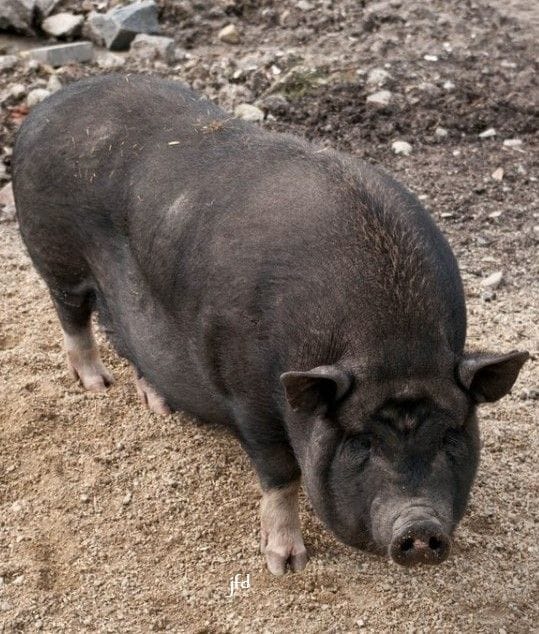
The Heude’s Pig, sometimes called the Indochinese Warty Pig, is one of the most mysterious members of the wild pig family. Long thought extinct, it was only recently rediscovered through rare sightings in Laos and Vietnam.
Identification
This large-bodied pig is believed to have thick, dark fur and a heavy build similar to that of the Eurasian Wild Boar. It likely has moderate facial warts, though limited photographic evidence makes full identification challenging. Historical records describe it as having a long, muscular snout and coarse black hair.
Habitat and Range
Heude’s Pig once ranged widely across southern China, Laos, and Vietnam. Today, it may survive only in remote forested regions where human access is limited. Its preferred habitats include tropical lowland forests, bamboo thickets, and river valleys.
Behavior and Diet
Little is known about its behavior, but like other Sus species, it is presumed omnivorous — feeding on fruits, roots, invertebrates, and small vertebrates. Its foraging likely plays an important role in soil mixing and seed dispersal.
Interesting Fact
For decades, scientists debated whether Heude’s Pig was a valid species or a local variation of the Eurasian Wild Boar. Its rediscovery through skulls found in hunting markets reignited interest in Southeast Asian pig taxonomy and conservation.
15. Babirusa (Babyrousa babyrussa)

The Babirusa, also known as the “deer-pig,” is one of the strangest-looking mammals in the world. Found in Indonesia, this species seems almost mythical — with tusks that grow upward through the skin of its snout like twisted horns.
Identification
The Babirusa’s name literally means “pig-deer” in Malay, referring to its unusual tusks that resemble deer antlers. Males have upper canines that grow upward and backward through the snout, curving toward the forehead. They have thin, almost hairless skin and a long, barrel-shaped body with slender legs.
Habitat and Range
Native to the Indonesian islands of Sulawesi, Buru, and Sula, Babirusas inhabit rainforests, riverbanks, and swampy lowlands. They rely heavily on freshwater sources for drinking and wallowing, as their skin is sensitive to heat and dryness.
Behavior and Diet
Unlike other wild pigs, Babirusas are more solitary. They feed on fruits, fallen nuts, leaves, and small invertebrates. Their unique tusks are used more for display and competition than for digging or defense. Males often engage in ritualized “boxing” matches using their tusks to impress females.
Interesting Fact
Because of their unusual appearance, Babirusas have been featured in ancient Indonesian art for centuries. Scientists believe their strange tusks evolved primarily for sexual selection rather than survival — making them one of nature’s most striking examples of evolutionary eccentricity.
16. Togian Babirusa (Babyrousa togeanensis)
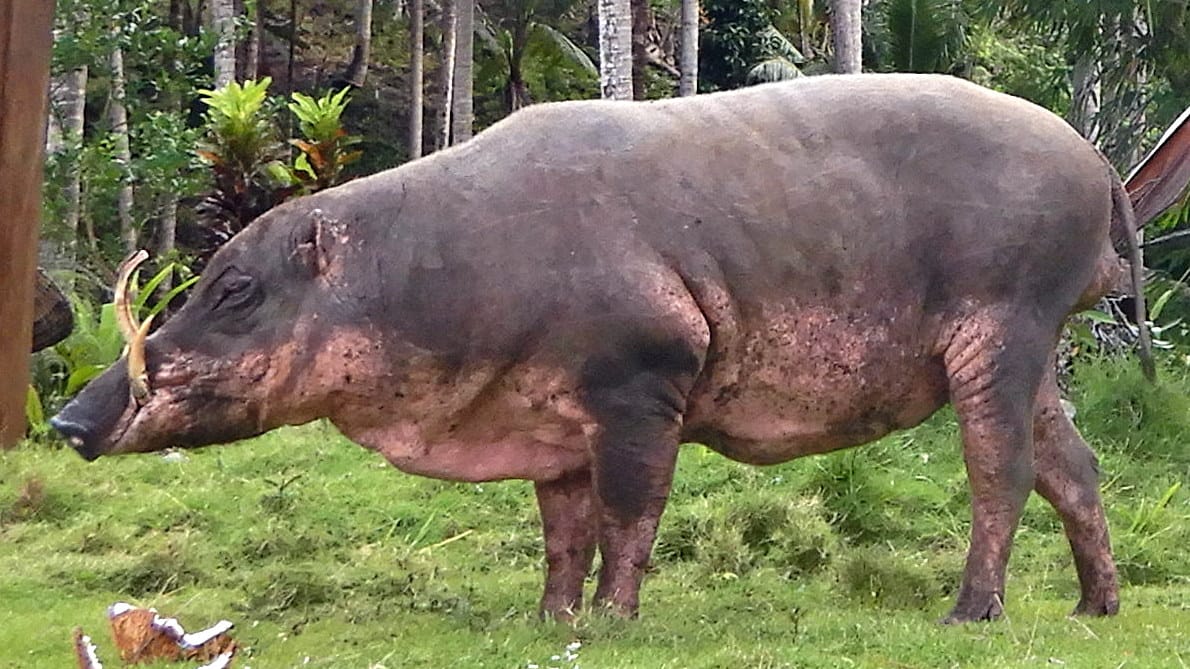
The Togian Babirusa is one of the most fascinating wild pigs in the world. Native only to the Togian Islands of Indonesia, this species is known for its surreal appearance and isolated evolution.
Identification
Smaller than the common Babirusa, this species has smoother, greyish skin and a more refined build. Males sport the same iconic upward-curving tusks that pierce the top of their snout, giving them a striking, almost prehistoric look. Females lack these tusks entirely, making it easy to tell the sexes apart.
Habitat and Range
It lives exclusively in the rainforests and mangroves of the Togian Islands, a remote island chain in Central Sulawesi. Due to its limited range, this species is considered endangered, threatened by hunting and habitat loss.
Behavior and Diet
Like other Babirusas, Togian Babirusas feed mainly on fruits, fallen nuts, leaves, and small invertebrates. They’re shy, diurnal animals that rely heavily on dense cover and muddy pools to stay cool.
Interesting Fact
DNA studies show that the Togian Babirusa diverged from other Babirusa species thousands of years ago when sea levels isolated the islands — making it a living example of island evolution in action.
17. Bolaang Mongondow Babirusa (Babyrousa bolabatuensis)

The Bolaang Mongondow Babirusa is another rare Indonesian pig species, found only in the northern peninsula of Sulawesi. It’s often confused with the Togian Babirusa, but closer inspection reveals distinct physical and genetic differences.
Identification
This Babirusa has thicker skin and a denser body compared to its island relatives. The males’ tusks are shorter, curving backward but not penetrating the snout, giving them a more modest look. Their coloration ranges from brownish-gray to dark olive.
Habitat and Range
It inhabits tropical rainforests and hilly terrain in northern Sulawesi, typically near rivers and swamps. Unfortunately, human encroachment and illegal hunting have caused sharp declines in its population.
Behavior and Diet
These pigs are omnivorous and often forage near riverbanks for fruits, roots, insects, and small animals. They are excellent swimmers, using rivers as natural highways to move between forest patches.
Interesting Fact
Until recently, scientists thought the Bolaang Mongondow Babirusa was simply a variation of the common Babirusa. However, genetic research confirmed it as a distinct species, highlighting how much is still unknown about Sulawesi’s wildlife.
18. Sulawesi Babirusa (Babyrousa celebensis)
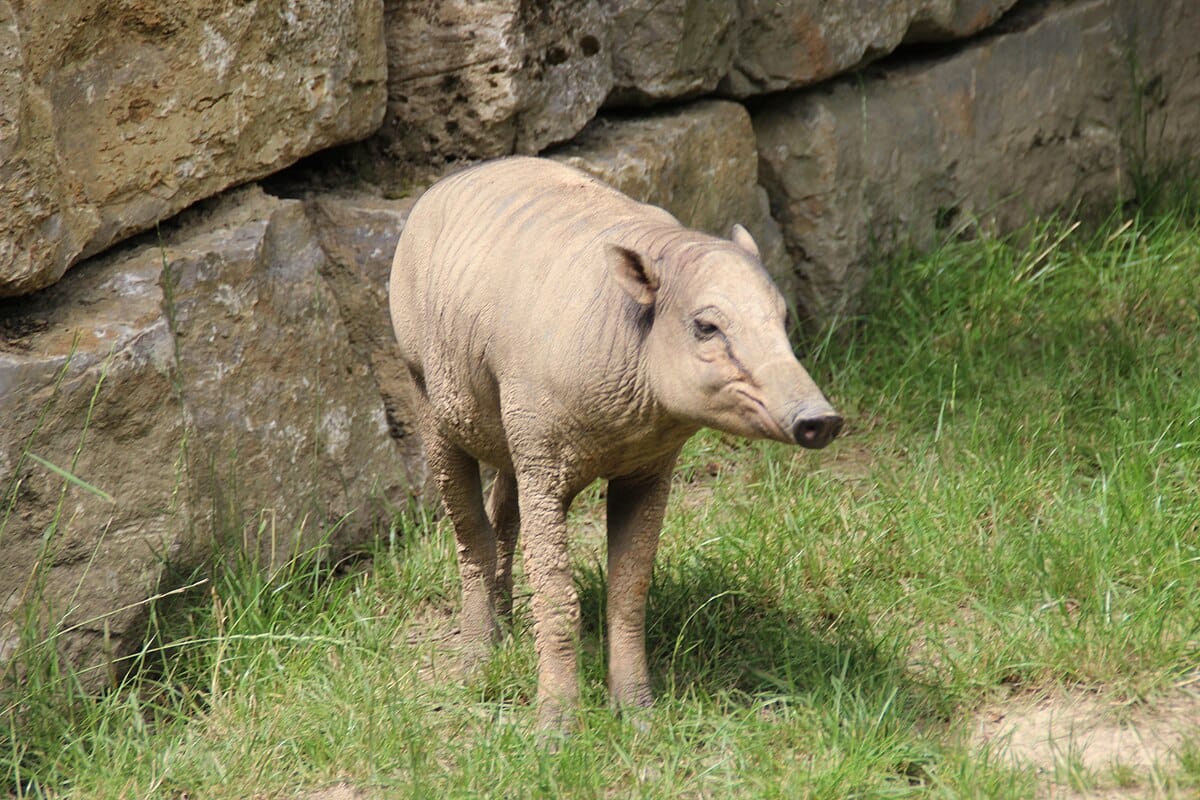
The Sulawesi Babirusa is the best-known and most studied of all Babirusa species. It’s the iconic “deer-pig” often featured in wildlife documentaries due to its extraordinary tusks and ancient lineage.
Identification
The Sulawesi Babirusa has long, curling tusks that grow upward through the snout — a trait that seems almost fantastical. Its hairless grayish skin and slender frame give it a prehistoric, almost otherworldly appearance.
Habitat and Range
It lives throughout the forests and swamps of northern and central Sulawesi, where it prefers dense undergrowth near rivers. Unlike some of its relatives, it adapts relatively well to different forest types but remains vulnerable to poaching and habitat destruction.
Behavior and Diet
Sulawesi Babirusas are diurnal and omnivorous. They eat a mix of fruits, leaves, nuts, and insects. Their tusks are used not for digging but as displays during male dominance fights — often locking together in slow, ritualized “battles.”
Interesting Fact
Because of its ancient physical traits, scientists once considered the Sulawesi Babirusa a possible evolutionary link between pigs and early even-toed ungulates (hoofed mammals). It’s often called a “living fossil.”
19. Ryukyu Wild Boar (Sus scrofa riukiuanus)
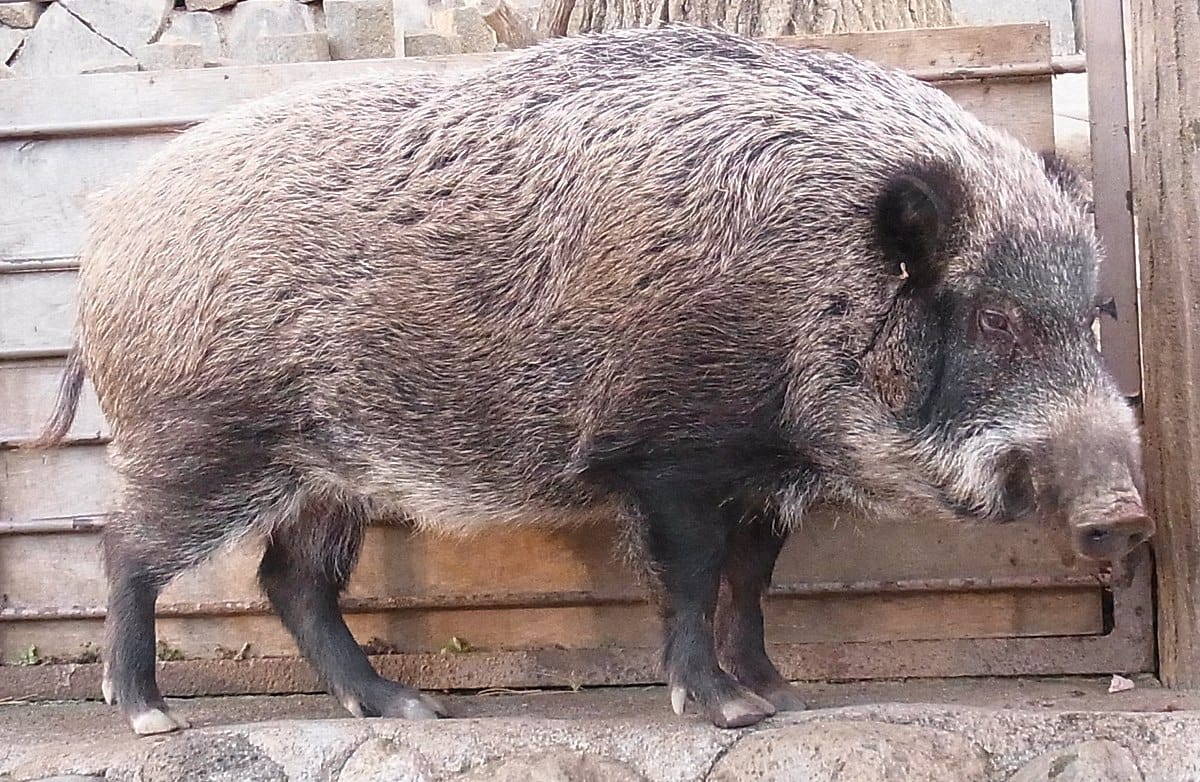
The Ryukyu Wild Boar is a small, resilient wild pig native to Japan’s southern islands, including Okinawa and Amami. It’s a subspecies of the Eurasian Wild Boar, but with adaptations unique to its island environment.
Identification
This boar is smaller than mainland species, usually around 45–60 kg. It has coarse, dark brown fur, short legs, and a compact snout — ideal for navigating dense subtropical forests. Its tusks are smaller but extremely sharp.
Habitat and Range
Found throughout the Ryukyu Archipelago, it thrives in forests, farmlands, and mountain slopes. It’s known for being both adaptable and elusive, often feeding at night to avoid humans.
Behavior and Diet
The Ryukyu Wild Boar eats roots, berries, small reptiles, and even crabs near coastal areas. Farmers often view it as a pest because it digs up fields, but it also helps the ecosystem by spreading seeds and aerating the soil.
Interesting Fact
Local folklore often portrays the Ryukyu Wild Boar as a symbol of courage and stubbornness — traits admired in Okinawan culture. It’s sometimes called “Yamashishi,” meaning “mountain lion-pig.”
20. Andaman Wild Pig (Sus scrofa andamanensis)
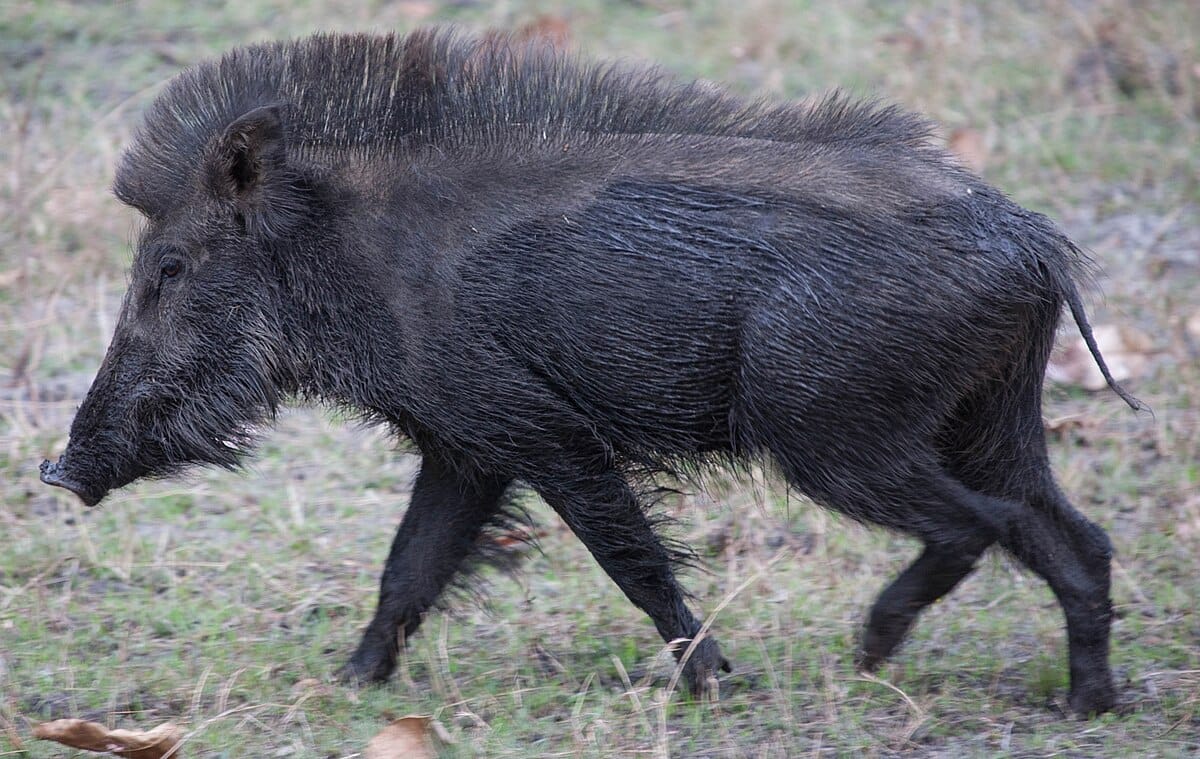
The Andaman Wild Pig is an elusive and little-known subspecies of the wild boar found only on the Andaman Islands, an isolated archipelago in the Bay of Bengal belonging to India. This pig represents one of the most geographically unique and evolutionarily distinct wild boars in Asia.
Identification
The Andaman Wild Pig is medium-sized, with a compact body and coarse, dark brown to black fur. It has a shorter snout and thicker neck than mainland wild boars, an adaptation that helps it navigate the dense island forests. Males often develop sharp, slightly curved tusks used for digging and defense, while females are smaller and less robust in build.
Its tail is shorter, and the legs are stronger — features that reflect its life in a rugged island environment filled with roots, vines, and uneven terrain.
Habitat and Range
Endemic to the Andaman Islands, this wild pig inhabits tropical rainforests, mangroves, and coastal swamps. Because of its limited range, it faces constant threats from hunting, habitat loss, and competition with introduced species such as domestic pigs.
These pigs are skilled swimmers and have even been observed foraging along the coast, feeding on fallen fruits and small crustaceans — an unusual habit for a wild pig.
Behavior and Diet
Andaman Wild Pigs are omnivorous and opportunistic feeders. Their diet includes forest fruits, tubers, roots, insects, and occasionally small reptiles or carrion. They are mostly nocturnal, coming out at night to forage and retreating to the forest undergrowth during the day.
They live in small family groups led by a dominant sow, showing tight social bonds similar to other Sus scrofa subspecies. The species is shy and rarely seen by humans, preferring to remain hidden in the dense jungle.
Interesting Fact
The Andaman Wild Pig is considered sacred by the indigenous tribes of the islands, particularly the Onge and Jarawa people, who have coexisted with the species for thousands of years. Traditionally, the pig is both a source of food and a cultural symbol, often featured in local legends as a guardian of the forest.
Today, the Andaman Wild Pig is listed as vulnerable due to habitat fragmentation and hybridization with domestic pigs. Conservation efforts focus on protecting its rainforest habitat and preventing genetic mixing that could erase this distinct island subspecies.
21. Korean Wild Boar (Sus scrofa coreanus)
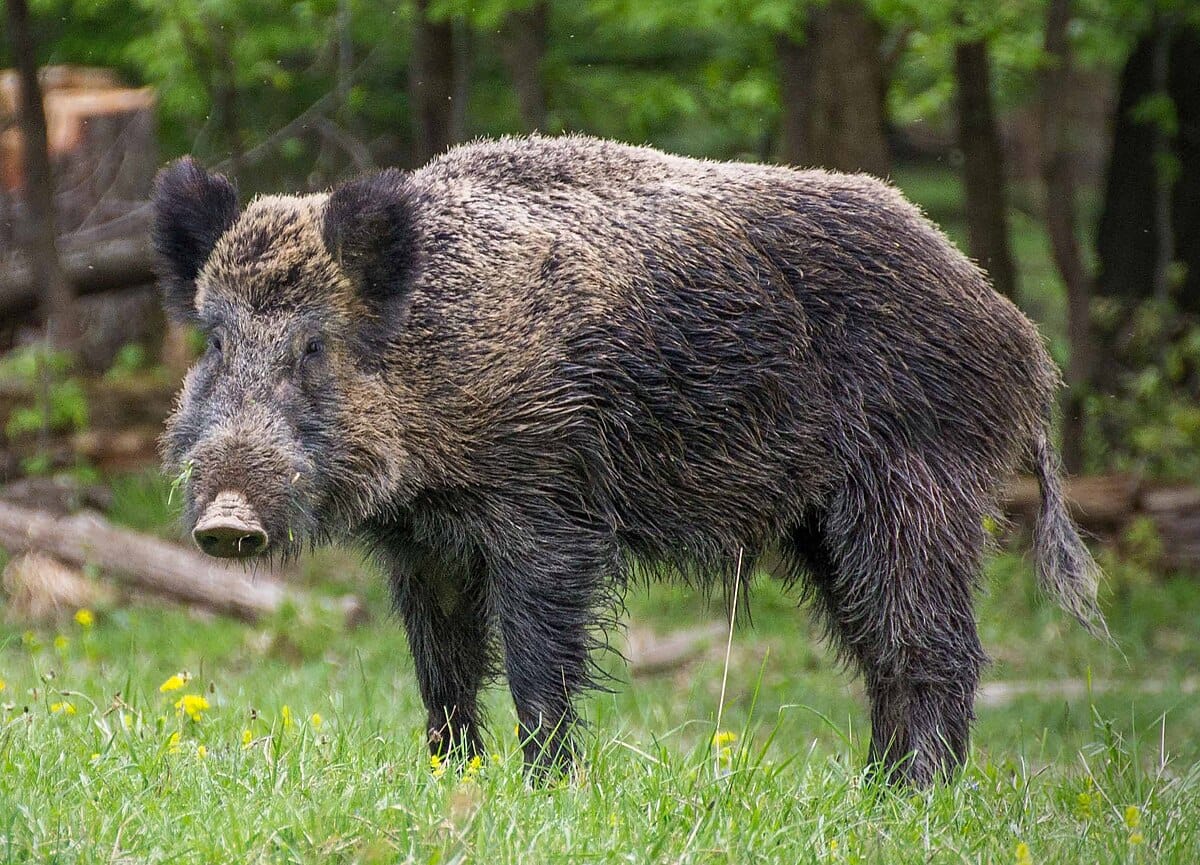
The Korean Wild Boar is a robust and intelligent subspecies native to both North and South Korea. Known for its adaptability and cunning, this animal plays a key role in maintaining forest ecosystems across the Korean Peninsula.
Identification
Korean Wild Boars are medium-sized compared to their European relatives, weighing between 70–120 kg. They have coarse, dark-gray to black fur and shorter legs, giving them a sturdy, compact appearance. Their tusks are powerful and slightly curved, used for digging roots and self-defense.
Habitat and Range
They are widely distributed throughout Korea’s mountains and forests, thriving in both temperate and cold regions. In recent years, urban sightings have increased, as expanding pig populations push them into farmland and even city outskirts.
Behavior and Diet
Omnivorous by nature, these boars feed on acorns, roots, tubers, and insects. They also scavenge for carrion when food is scarce. During winter, they dig dens in snow-covered hills to stay warm. Females (sows) are known to be fiercely protective mothers.
Interesting Fact
The Korean Wild Boar’s intelligence and boldness have earned it a mythical reputation. In traditional Korean folklore, it symbolizes bravery, strength, and determination — often depicted as a fearless animal that never backs down from a fight.
22. Chinese Wild Boar (Sus scrofa moupinensis)
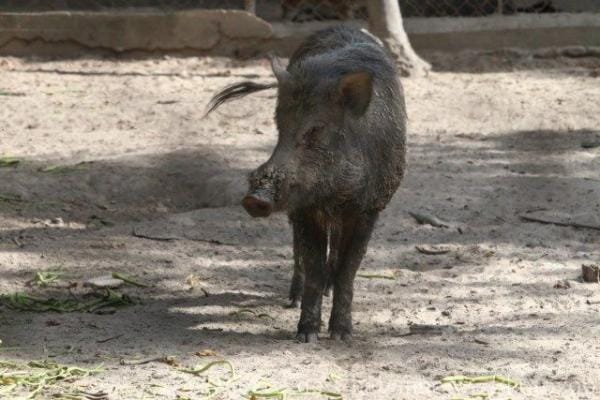
The Chinese Wild Boar is one of the most widespread and ecologically influential pig species in East Asia. It’s the primary ancestor of many Asian domestic pigs and has been part of Chinese landscapes for thousands of years.
Identification
This subspecies is smaller and more agile than the European boar, typically weighing around 60–90 kg. Its fur color varies from gray-brown to reddish-brown depending on the season. The snout is elongated, and the body is lean, built for moving through dense bamboo forests.
Habitat and Range
Found throughout central and southern China, these boars inhabit mountain forests, river valleys, and farmlands. They’re highly adaptive and capable of living close to human settlements, often causing crop damage.
Behavior and Diet
Chinese Wild Boars are omnivores that eat roots, tubers, berries, and small vertebrates. They use their strong snouts to dig up soil, improving aeration and nutrient cycling — making them important ecosystem engineers.
Interesting Fact
Archaeological evidence suggests the domestication of pigs began in China over 9,000 years ago from this very species. Thus, the Chinese Wild Boar holds a unique place in both ecology and human history.
23. Mindoro Warty Pig (Sus oliveri)

The Mindoro Warty Pig is one of the most mysterious and endangered wild pig species in the world. Found only on Mindoro Island in the Philippines, this unique pig was once thought to be a local population of the Visayan warty pig — until scientists confirmed it as a separate species in the 1990s.
Today, it stands as a symbol of island biodiversity and a reminder of how fragile tropical ecosystems can be.
Identification
The Mindoro Warty Pig is a medium-sized pig with a stocky frame, dark bristly fur, and the characteristic “warts” — fleshy facial pads that give the species its name. These warts are more prominent in males, who also develop a striking mane of coarse hair running from the head down the back.
Unlike other wild pigs, its fur coloration changes seasonally — during the breeding season, males often develop a lighter or reddish hue along the mane, making them appear more formidable and visually distinct.
Its snout is short but powerful, adapted for digging through rocky and root-covered terrain in search of food. The tusks are curved but not overly long, serving primarily for defense and competition during mating.
Habitat and Range
This species is endemic to Mindoro, an island separated from the rest of the Philippines by deep waters — meaning the pigs evolved in isolation. They live in dense mountain forests, grasslands, and agricultural edges, sometimes venturing close to human settlements when food is scarce.
However, rapid deforestation, hunting, and land conversion for agriculture have reduced their range drastically. Today, they survive mainly in Mounts Iglit–Baco National Park and a few remote forested zones.
Behavior and Diet
The Mindoro Warty Pig is nocturnal and highly intelligent, using its keen sense of smell to locate food in the dark. Its diet is omnivorous — consisting of roots, fruits, shoots, insects, and small vertebrates.
They live in small family groups known as sounders, typically led by a female. Males are solitary except during the breeding season, when fierce fights can occur between rivals. These clashes are dramatic, often involving loud squeals and displays of strength.
Interestingly, these pigs also “plow” the ground with their snouts, helping aerate soil and disperse seeds — an important ecological role in maintaining forest health.
Conservation Status
The Mindoro Warty Pig is listed as Endangered on the IUCN Red List. Habitat destruction and hunting remain the two biggest threats. Conservationists are working with local communities to promote eco-tourism and protect remaining forest habitats.
There’s also an ongoing effort to culturally reconnect locals to the species, as it was once part of Mindoro’s folklore and tribal hunting traditions. In some areas, villagers now view the pig as a “forest guardian” rather than a pest — a shift that’s vital for its long-term survival.
Interesting Fact
During mating season, males of this species are known to build wallows and scent-mark trees to attract females — behavior that’s quite advanced for wild pigs. Their grunts and communication sounds are also unique, featuring a lower tone and rhythmic pattern that scientists believe help maintain contact in dense forests.
24. Indo-Chinese Wild Boar (Sus scrofa jubatus)
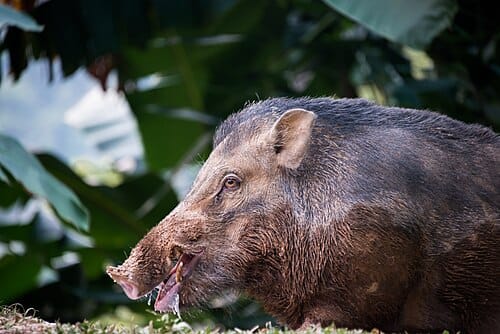
The Indo-Chinese Wild Boar is native to Southeast Asia, found in countries like Thailand, Cambodia, Laos, and Vietnam. This species showcases the incredible adaptability of wild pigs in tropical climates.
Identification
It’s smaller and lighter than its Indian counterpart, with shorter hair and a reddish-brown or dark gray coat. The snout is long and narrow, and the body is compact — ideal for navigating dense jungles.
Habitat and Range
Prefers moist forests, mangroves, and agricultural zones, often coexisting near human villages. It’s common to see these pigs feeding on fallen fruits and tubers after monsoon rains.
Behavior and Diet
Omnivorous and opportunistic, Indo-Chinese Wild Boars consume fruits, roots, insects, and small amphibians. They’re intelligent foragers that can adapt quickly to changing environments, making them successful even in disturbed habitats.
Interesting Fact
This species plays a vital ecological role by dispersing seeds through its droppings — helping regenerate Southeast Asia’s tropical forests. However, it’s increasingly threatened by poaching and habitat fragmentation.
25. Vietnamese Wild Boar (Sus scrofa vittatus)
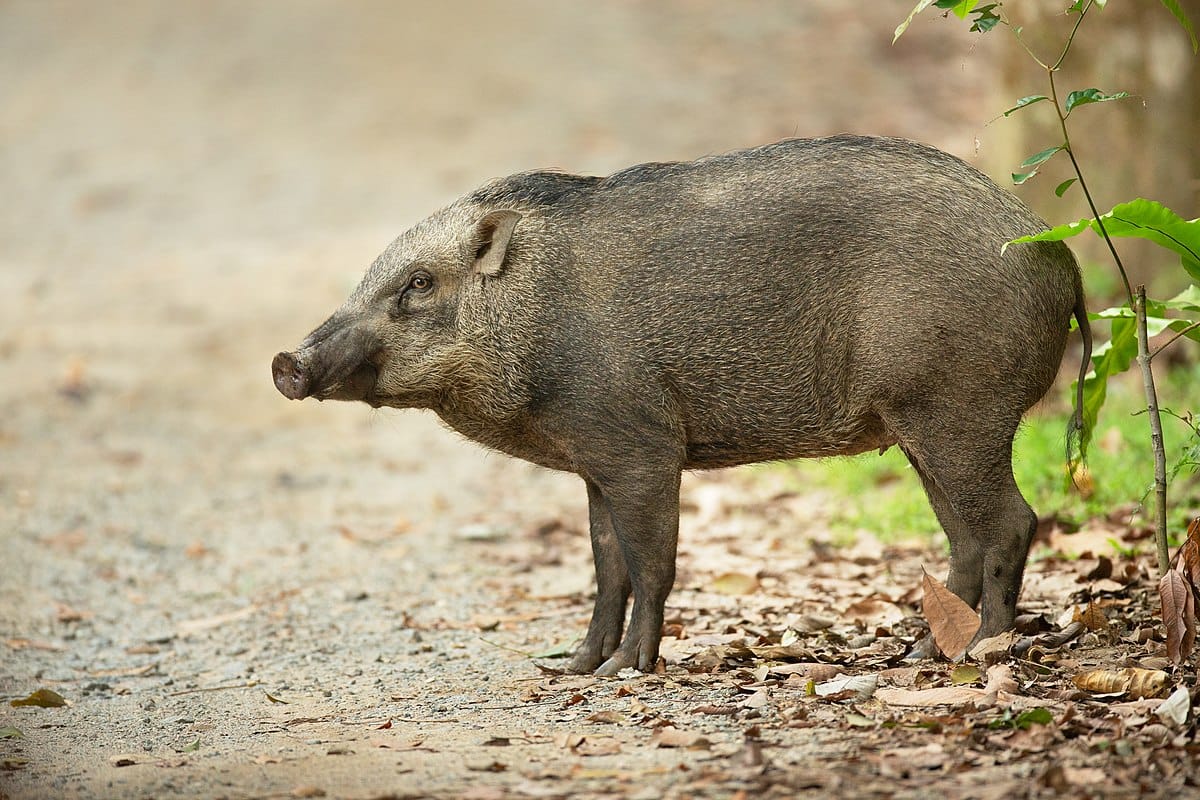
The Vietnamese Wild Boar, sometimes called the Banded Wild Boar, is a distinctive and hardy pig native to Vietnam and surrounding regions. It’s known for its smaller size, striped piglets, and adaptability to diverse habitats.
Identification
Adults are medium-sized, usually around 50–80 kg. Their fur is coarse and dark brown, and the young have light-colored stripes along their backs — a camouflage pattern that helps them hide from predators.
Habitat and Range
This species inhabits lowland forests, grasslands, and farmlands across Vietnam, Laos, and Cambodia. It’s well adapted to humid climates and often comes into contact with local farmers, sometimes leading to conflict.
Behavior and Diet
Vietnamese Wild Boars are highly social, living in small family groups led by a dominant female. They forage mainly at dawn and dusk for roots, fruits, worms, and small reptiles. They also wallow in mud to cool off and remove parasites.
Interesting Fact
Despite being smaller, the Vietnamese Wild Boar is incredibly resilient. It’s thought to have interbred with domestic pigs for centuries, influencing many Southeast Asian pig breeds. This makes it both ecologically and genetically significant.
26. Collared Peccary (Pecari tajacu)
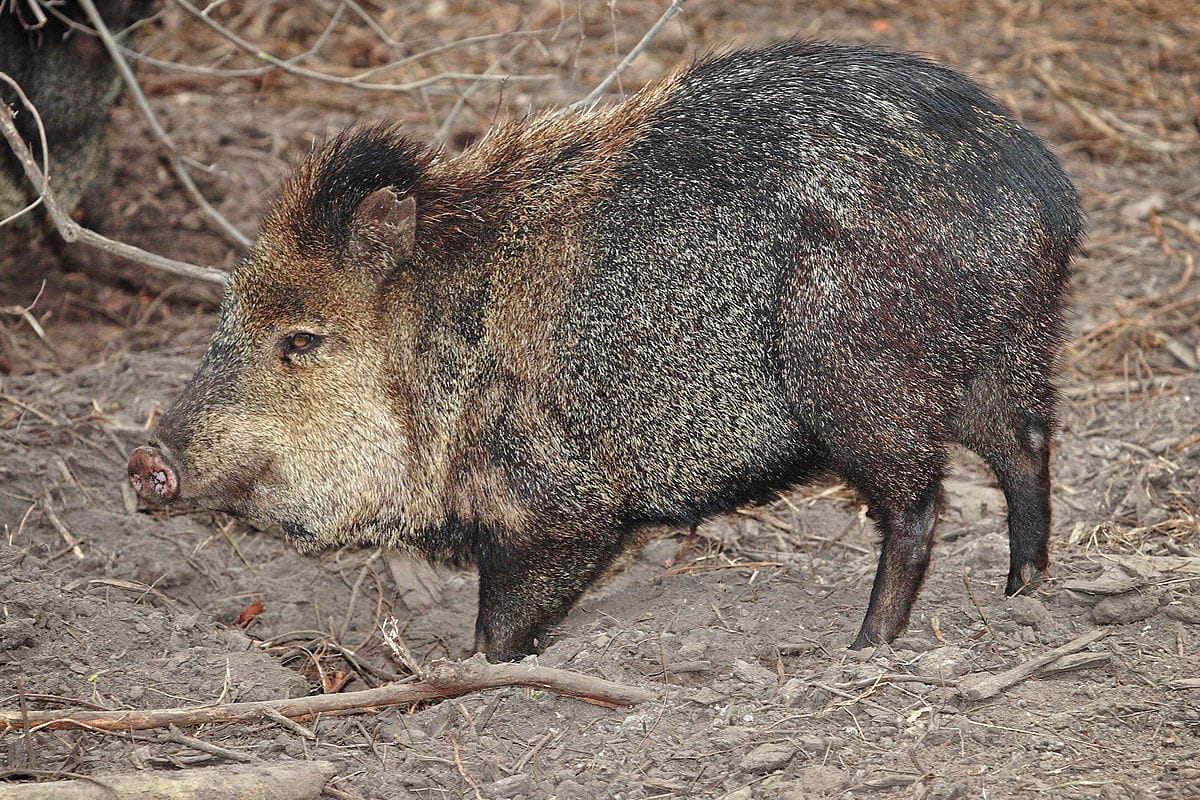
The Collared Peccary, also known as the Javelina, is a small, pig-like mammal native to the southern United States, Central America, and South America. Though it looks similar to a wild boar, it belongs to a completely different family — Tayassuidae — making it a New World cousin of true pigs.
Identification
Collared Peccaries are compact and sturdy animals, standing about 50 cm tall and weighing around 20–30 kg. Their coarse grayish-black fur is marked by a distinct light-colored “collar” of fur around the neck. They have small tusks that point downward and emit a strong musky odor from scent glands on their backs.
Habitat and Range
They thrive in deserts, tropical forests, grasslands, and dry scrublands, from Arizona and Texas down to Argentina. Their adaptability allows them to survive in both hot deserts and humid rainforests.
Behavior and Diet
Collared Peccaries are social animals that live in herds of up to 20 individuals. They’re omnivorous but mainly eat fruits, roots, cactus pads, and small insects. Their powerful jaws help them crush tough seeds and fibrous plants.
Interesting Fact
Despite their small size, these animals are bold and can defend themselves fiercely when threatened. Indigenous cultures in the Americas have long respected them as symbols of resilience and community spirit.
27. White-Lipped Peccary (Tayassu pecari)
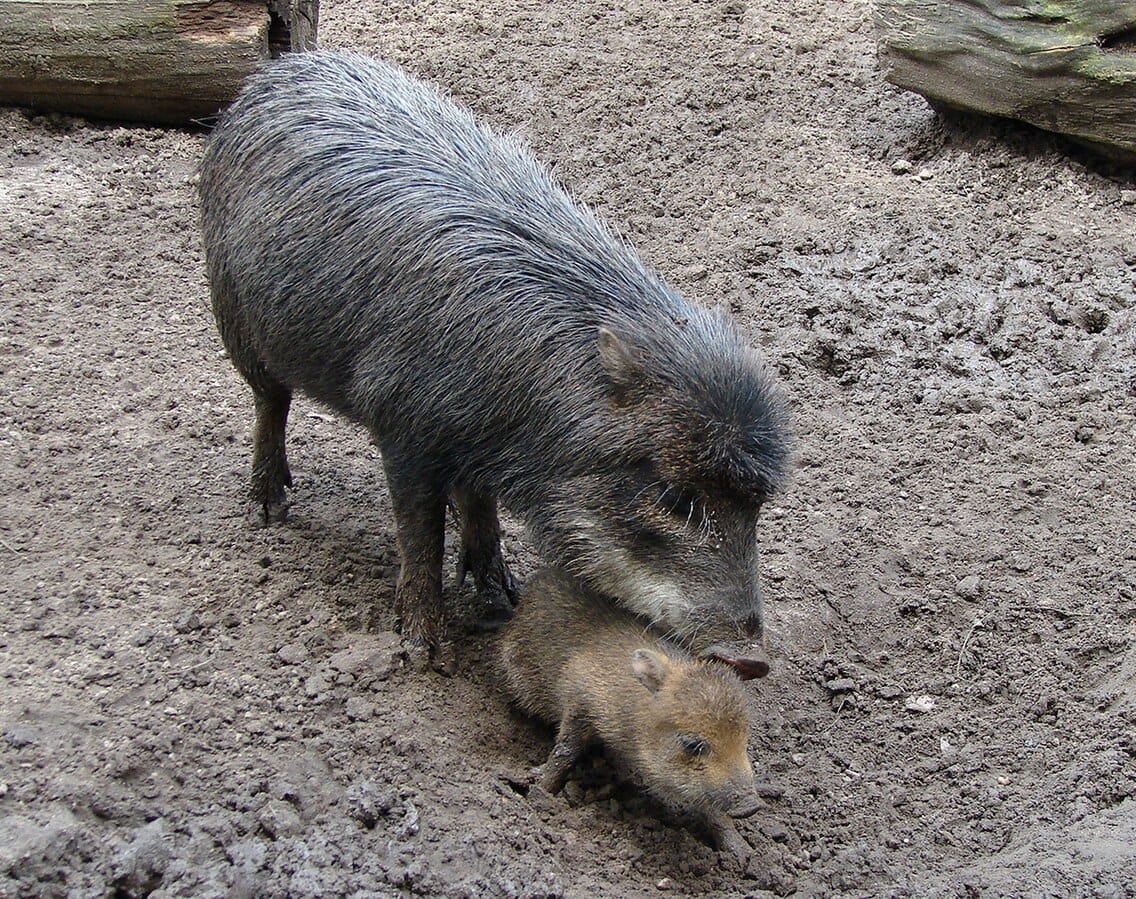
The White-Lipped Peccary is a highly social and vocal species found in the rainforests of Central and South America. It’s larger and more aggressive than the Collared Peccary, often moving in large, noisy herds that roam over vast territories.
Identification
This species can reach up to 40 kg in weight, with dark brown to black fur and a distinctive white stripe around the mouth. It has a strong, musky scent and long legs suited for covering long distances.
Habitat and Range
White-Lipped Peccaries prefer dense tropical forests and are especially common in the Amazon Basin. They need large tracts of undisturbed forest to find food and maintain their complex social structure.
Behavior and Diet
These peccaries feed on fruits, seeds, and tubers, helping disperse seeds and maintain forest health. They live in large groups — sometimes over 100 animals — and communicate with grunts, squeals, and scent marking.
Interesting Fact
Their herd behavior and reliance on pristine forests make them excellent indicators of ecosystem health. When White-Lipped Peccaries disappear, it’s often a sign of severe habitat degradation or hunting pressure.
28. Chacoan Peccary (Catagonus wagneri)
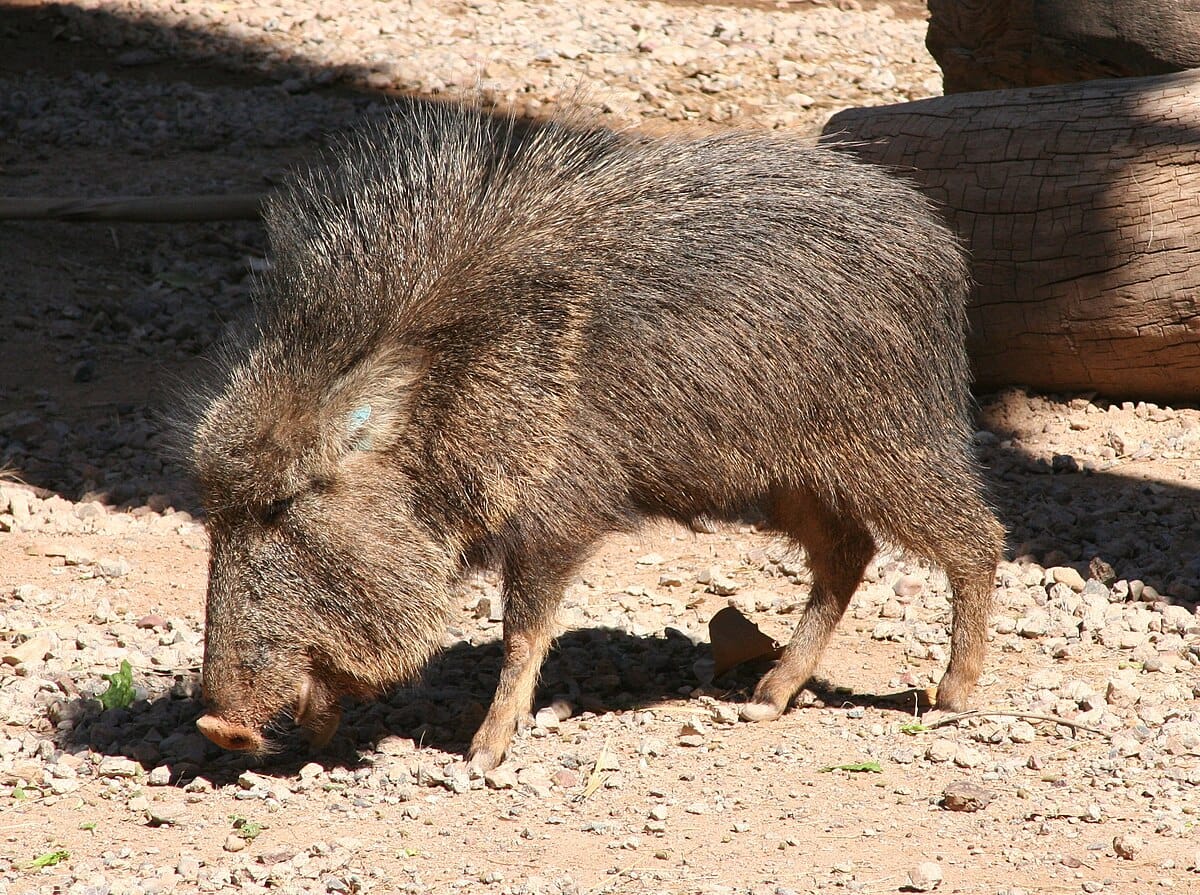
The Chacoan Peccary is a remarkable species native to the dry forests of Paraguay, Bolivia, and Argentina. Thought to be extinct until its rediscovery in 1975, it’s now one of the rarest wild pig relatives in the world.
Identification
It’s the largest of the three peccary species, weighing up to 40 kg. The Chacoan Peccary has a long, narrow snout and coarse grayish-brown fur. Its feet are adapted for walking on spiny vegetation and sandy soils.
Habitat and Range
This species inhabits the Gran Chaco region, a vast semi-arid plain filled with thorny shrubs and cacti. It’s uniquely adapted to this harsh environment, using its snout to dig for water-storing plants and roots.
Behavior and Diet
Chacoan Peccaries live in small groups and feed mainly on cactus pads, roots, fruits, and tubers. They chew cactus spines carefully before swallowing, using their tough mouths and lips as natural armor.
Interesting Fact
Scientists consider the Chacoan Peccary a “living fossil” — a species thought extinct for over a century until rediscovered. Its survival offers crucial insights into South America’s ancient ecosystems.
29. Giant Forest Hog (Hylochoerus meinertzhageni)

The Giant Forest Hog is the largest wild pig species on Earth, native to Central and East Africa’s forests. Despite its intimidating size, it’s a surprisingly shy and intelligent creature that plays an essential role in forest ecosystems.
Identification
Adult males can weigh up to 275 kg (600 lbs), making them true giants among pigs. They have dark gray to black skin covered in sparse hair, a long face, and massive tusks. Their large, floppy ears and thick hide protect them from insect bites and predators.
Habitat and Range
Found in rainforests and highland woodlands across countries like Uganda, Congo, and Kenya, the Giant Forest Hog prefers areas with dense cover and nearby water sources.
Behavior and Diet
They’re mainly nocturnal, foraging for grass, roots, fruits, and carrion at night. During the day, they rest in muddy wallows or dense thickets. Giant Forest Hogs live in small family groups led by a dominant male and are known for their loud grunts and snorts.
Interesting Fact
Though rare, encounters with these massive pigs are unforgettable. They’re among the few species capable of intimidating predators like leopards and hyenas when defending their young.
30. Togean Warty Pig (Sus celebensis togeanus)

The Togean Warty Pig, also known as the Togian Warty Pig, is a little-known wild pig species found only on the Togean Islands of central Sulawesi, Indonesia. This elusive island dweller is one of the most geographically isolated and genetically distinct members of the Sus genus — and one of the least studied.
Identification
The Togean Warty Pig is smaller and leaner than its close relative, the Sulawesi Warty Pig (Sus celebensis). It has a short, muscular body with dark grayish-black bristles and a narrow snout adapted to foraging in sandy soils and coastal areas.
Males feature the signature facial “warts”, which are thick pads of skin protecting the face during fights. Compared to other warty pigs, these are less pronounced, giving the animal a slightly smoother facial profile.
Its mane is shorter, but it can still stand upright during displays of aggression or courtship. The eyes are intelligent and alert — a reflection of the species’ shy, cautious nature.
Habitat and Range
This species is endemic to the Togean Islands, a remote volcanic archipelago surrounded by the clear blue waters of the Gulf of Tomini. It inhabits tropical rainforests, mangroves, and beachside thickets, occasionally venturing into upland areas in search of food.
Because of its isolation, the Togean Warty Pig has adapted to a limited range of food sources and environmental pressures — a classic example of island evolution. Unfortunately, this also makes it highly vulnerable to habitat loss and hunting.
Behavior and Diet
Like other wild pigs, the Togean Warty Pig is omnivorous, feeding on fallen fruits, roots, nuts, insects, and occasionally small animals. Its foraging plays a vital role in maintaining forest diversity — dispersing seeds and mixing organic material into the soil.
They are mostly nocturnal and live in small family groups of up to six individuals. Males are territorial, marking their space with scent and using vocalizations to warn off rivals.
One remarkable adaptation observed in this species is its ability to swim between islands, allowing it to travel short distances across water — a rare skill among wild pigs.
Reproduction and Social Behavior
The breeding season is not fixed but seems to correspond with the rainy months, when food is abundant. Females give birth to litters of 2–5 piglets, which stay hidden in dense vegetation for the first few weeks.
The young have characteristic striped coats — an evolutionary camouflage shared by many piglets in the Sus genus. As they mature, the stripes fade, replaced by darker bristles.
Conservation Status
The Togean Warty Pig is currently listed as Vulnerable by the IUCN. Its main threats are deforestation, illegal hunting, and hybridization with domestic pigs introduced by local communities.
Conservation efforts are ongoing in the Togean Islands National Park, but protection is difficult due to limited resources and the species’ remote habitat. Scientists stress that preserving this pig is crucial for maintaining the islands’ ecological balance — and for understanding the evolutionary pathways of Southeast Asian wild pigs.
Interesting Fact
The Togean Warty Pig was scientifically described only in the early 21st century, making it one of the newest recognized members of the wild pig family. It’s sometimes called the “ghost of the Togeans” because of how rarely it’s seen — locals often hear it rustling through the forest but seldom catch a glimpse.
FAQ’s
1. What are the 7 classifications of pigs?
Pigs belong to a group of mammals classified under the animal kingdom. Their full scientific classification is:
Kingdom: Animalia, Phylum: Chordata, Class: Mammalia,
Order: Artiodactyla, Family: Suidae, Genus: Sus,
and Species: scrofa (for the wild boar).
These seven categories place pigs among even-toed hoofed mammals, closely related to hippos and peccaries.
2. What is the most aggressive wild pig?
The wild boar (Sus scrofa) is generally considered the most aggressive wild pig.
Males become extremely territorial, especially during mating season, and females will fiercely defend their piglets.
When threatened, they can charge at incredible speed and use their sharp tusks to defend themselves.
3. What is a wild pig called?
A wild pig is commonly called a wild boar.
In North America, you may also hear names like feral hog, wild hog, or razorback —
all refer to pigs living freely in the wild rather than being raised on farms.
4. How many types of pigs are there?
There are about 16 recognized species of wild pigs around the world, spread across Africa, Europe, and Asia.
When including domestic breeds and hybrids, there are over 500 types of pigs — each bred for different traits like size, meat quality, or adaptability.
5. What is the 3 3 3 rule for pigs?
The 3-3-3 rule is a simple way to describe a sow’s reproductive cycle:
3 months of pregnancy, 3 weeks of nursing (lactation), and 3 days before she’s ready to breed again.
Farmers use this to plan piglet production and manage herds efficiently.
6. What is the rarest type of pig?
The Javan warty pig (Sus verrucosus) from Indonesia is one of the rarest pigs in the world.
Habitat loss and hunting have made it critically endangered, with only a few hundred left in the wild today.
7. What are killer pigs called?
“Killer pigs” isn’t an official name, but it usually refers to aggressive feral hogs or wild boars that attack when provoked.
Despite their name, these animals don’t normally hunt humans — they attack only if threatened, injured, or protecting young.
8. What is the friendliest pig?
The Vietnamese pot-bellied pig and the Kunekune pig from New Zealand are known as the friendliest.
They love human interaction, enjoy gentle petting, and can even be trained like dogs when raised in caring homes.
9. What animal is a silent killer?
In the animal world, a “silent killer” refers to predators that strike quietly — like leopards, snakes, or owls.
Pigs themselves aren’t silent killers, but wild boars can surprise intruders with sudden, powerful charges when defending their territory.
10. What are pink pigs called?
The pink pigs you often see on farms are mostly the Yorkshire or Landrace breeds.
Their pale skin and light hair make them appear pink — a result of selective breeding for domestication and gentle temperament.
11. How many pigs did Jesus have?
The Bible story in the Book of Mark describes Jesus casting demons into a herd of pigs — around 2,000 pigs in total.
It’s a symbolic story, not meant to describe literal modern pig breeds, but it shows pigs were common livestock even in ancient times.
12. What is the difference between a pig and a wild boar?
A pig is a domesticated animal bred by humans, while a wild boar is its wild ancestor.
Wild boars have longer legs, coarse dark fur, and tusks for defense.
Domestic pigs are usually larger, rounder, and less aggressive due to selective breeding.
13. What is the smartest type of pig?
All pigs are surprisingly intelligent, but studies show domestic pigs and mini pigs can outperform dogs in learning and problem-solving.
They recognize their names, remember tasks, and even enjoy puzzle toys for mental stimulation!
14. Do pigs like to be petted?
Yes — most pigs love gentle touch once they trust you.
They especially enjoy scratches behind the ears or along the belly.
Like people, each pig has its own personality, so it’s best to approach slowly and let the pig initiate contact.
15. Which two pigs are the strongest leaders?
In the wild, leadership usually comes from the dominant sow — the matriarch who leads the group and protects piglets.
Among males, the alpha boar often leads during the breeding season, defending his territory and family group from rivals.
16. Can a regular pig turn into a wild boar?
Technically, a regular domestic pig can become feral if it escapes into the wild and survives on its own.
Over time, it grows tougher, develops longer hair, and may even grow small tusks.
However, it doesn’t become a true wild boar — its genes stay domestic.
It’s what we call a feral pig, not a pure wild boar.
17. What is the biggest pig in the world?
The biggest recorded pig was a giant domestic hog named Big Bill from Tennessee, USA.
He weighed an unbelievable 2,552 pounds (1,157 kg) and measured 5 feet tall and 9 feet long.
In the wild, the Giant Forest Hog (Hylochoerus meinertzhageni) from Africa holds the record as the largest wild species.
18. What is a Javali?
Javali is the Portuguese and Brazilian name for the wild boar (Sus scrofa).
In South America, it can also refer to feral pigs descended from European boars introduced for hunting.
Today, “javali” describes any wild or hybrid pig living freely in nature.
19. What is the fattest type of pig?
The Large White and Landrace breeds are known for rapid weight gain in farming,
but the Polish Large White and Meishan pig from China are some of the fattest breeds in the world.
These pigs can have thick layers of fat — once prized for making lard.
20. Which country has the most pigs in the world?
China has by far the most pigs on Earth — home to more than half of the world’s total pig population.
Pork is the main meat in Chinese cuisine, and pig farming plays a huge role in the nation’s food economy.
21. Is Hogzilla still alive?
No — Hogzilla was a giant feral hog shot in Georgia, USA, in 2004.
Initial reports said he was over 1,000 pounds and 12 feet long, though later studies showed he was closer to 800 pounds.
Hogzilla became a legend, inspiring documentaries and even a horror movie.
22. Can a pig and a wild boar mate?
Yes — domestic pigs and wild boars are genetically compatible, both belonging to the genus Sus.
Their offspring are called hybrids or feral boars, and they often combine the toughness of wild pigs
with the size of domestic ones, which can make them especially hard to control in the wild.
23. What is the most aggressive type of pig?
Among all wild pig species, the Eurasian wild boar is still considered the most aggressive.
However, feral hogs — hybrids of wild boars and domestic pigs — can be equally dangerous,
especially when protecting young or cornered by hunters.
24. What exactly is a razorback?
A razorback is a wild or feral pig found mainly in the southern United States.
It gets its name from the sharp, “razor-like” ridge of hair along its back.
Razorbacks are hardy survivors descended from domestic pigs brought by early European settlers.
25. What is the #1 deadliest animal in the world?
Believe it or not, the deadliest animal isn’t a predator — it’s the mosquito.
Mosquitoes kill over a million people every year by spreading diseases like malaria and dengue fever.
Wild pigs can be dangerous, but they don’t even come close to those numbers.
26. What is the friendliest type of pig?
The Kunekune and mini pot-bellied pigs are often called the friendliest.
They’re social, gentle, and love companionship — even cuddling with humans.
Because of their calm nature, they’re popular as therapy and companion animals.
27. Can I outrun a wild hog?
Probably not.
Wild hogs can sprint up to 30 miles per hour (48 km/h) for short bursts — faster than most humans.
If you encounter one, it’s better to climb a tree, get behind a large object, or move uphill rather than trying to run straight away.
28. Do wild pigs eat meat?
Yes — wild pigs are omnivores.
They eat roots, fruits, insects, small reptiles, eggs, and sometimes even carrion or small mammals.
Their flexible diet helps them survive in almost any environment.
29. Are javelinas aggressive?
Javelinas, or collared peccaries, look like pigs but belong to a different family.
They’re usually shy but can become aggressive if cornered or protecting young.
When threatened, they may charge or use their sharp teeth to defend themselves.
30. What is a wild African pig called?
Africa is home to several wild pig species, including the warthog, bushpig,
and the massive Giant Forest Hog.
Each species plays an important role in its ecosystem — from digging up roots that aerate the soil to providing food for predators like lions.
31. What is the rarest pig ever?
The rarest pig ever recorded is the Visayan warty pig from the Philippines.
It’s critically endangered, with only a few hundred individuals left in the wild.
Their unique spiky mane and facial “warts” make them easily recognizable and sadly, highly targeted by hunters.
32. What is the rule of 3 for pigs?
The Rule of 3 refers to a pig’s breeding cycle — 3 months of pregnancy, 3 weeks of nursing, and 3 days until rebreeding.
Farmers use it to plan litters and manage healthy, productive herds.
33. What is another name for a wild pig?
Wild pigs are often called wild boars, feral hogs, or razorbacks depending on the region.
In Africa, some people say “bushpig,” and in South America, they’re sometimes known as “javali.”
34. What is Angel’s pig called?
In popular culture, Angel’s pig often refers to Hamm, the toy pig from the Toy Story series.
If you’re referring to another story, feel free to clarify — there are several fictional pigs with that name!
35. What is a ginger pig called?
A “ginger pig” usually refers to pigs with reddish or golden coats, such as the Tamworth pig.
This breed is known for its beautiful copper color, friendly nature, and excellent outdoor adaptability.
36. What is a Barbie pig?
The term “Barbie pig” isn’t scientific — it’s a nickname sometimes used for small, pink pet pigs that look “cute” or “toy-like.”
These are usually mini pigs or pot-bellied pigs raised as companions.
37. What animal has only 100 left?
One of the world’s rarest animals with fewer than 100 left is the Javan rhinoceros.
When it comes to pigs, the Javan warty pig is also critically endangered, possibly with a population near that number.
38. What animal is calm but violent?
The hippopotamus fits that description well — it seems calm but can be extremely dangerous when provoked.
Similarly, wild pigs are calm while foraging but can become aggressive in an instant if they feel threatened.
39. Which animal has no heart?
Every living animal has a heart, but some sea creatures like jellyfish and starfish don’t have a traditional heart like mammals do.
Instead, they circulate nutrients through simple systems using water or body movement.
40. What is the most aggressive wild pig?
The title still goes to the wild boar.
They’re extremely territorial, especially males during mating season and females with piglets.
Their speed and tusks make them one of the most dangerous large mammals to surprise in the wild.
41. Do pigs have a high IQ?
Yes! Pigs are among the smartest animals on the planet — smarter than dogs and even some primates.
They can solve puzzles, remember routes, and understand basic words and symbols.
42. Do pigs love their humans?
Absolutely. Pigs form strong emotional bonds with their caretakers.
They enjoy being near people they trust and often show affection by nudging or gently grunting.
Many owners compare their loyalty to that of dogs.
43. What is the fattest breed of pig?
The Meishan pig from China is known as one of the fattest breeds.
It has a slow metabolism, deep wrinkles, and thick layers of fat — once used for traditional Chinese cuisine and lard production.
44. What is the biggest wild pig ever caught?
One of the largest wild pigs ever caught was a feral hog nicknamed Hogzilla in Georgia, USA.
It measured about 8.5 feet long and weighed around 800 pounds.
Another giant, “Monster Pig,” reportedly weighed over 1,000 pounds, though those numbers are often debated.
45. Are pigs clean animals?
Surprisingly, yes — pigs are naturally clean!
They keep their eating, sleeping, and waste areas separate.
The only reason they roll in mud is to cool down and protect their skin from sunburn and insects.
46. What is the difference between a boar and a razorback?
The term “boar” generally refers to any wild pig, especially males. A “razorback,” on the other hand, is a type of feral pig found mainly in the southern United States. It gets its name from its sharp, ridge-like back that looks like a razor. While all razorbacks are boars, not all boars are razorbacks!
47. What is the 3 3 3 rule for pigs?
The 3-3-3 rule is a guideline for pig reproduction. It means 3 months of pregnancy, 3 weeks of nursing, and 3 days before the sow is ready to mate again. This schedule helps farmers keep their breeding cycles organized and efficient.
48. What are killer pigs called?
“Killer pigs” is a dramatic term usually used for aggressive wild boars or razorbacks that attack when threatened. In reality, pigs don’t hunt for sport—they only become dangerous if cornered or defending their young. These incidents are rare but can happen in the wild.
49. What is the friendliest pig?
Miniature pigs, especially breeds like the Juliana or Vietnamese Pot-Bellied Pig, are known for being extremely friendly and affectionate. They love human attention and can even form strong emotional bonds with their owners—almost like dogs!
50. What do Italians call wild boar?
In Italy, wild boar is called “cinghiale.” It’s a well-known animal in Italian forests and even appears in many traditional dishes. The cinghiale symbolizes strength and wild nature in Italian culture.
Conclusion: The World of Wild Pigs
From the forests of Africa to the jungles of Asia and the deserts of the Americas, wild pigs are among the most adaptable and intelligent mammals on Earth. Their ability to thrive in nearly every ecosystem — from icy mountains to tropical islands — shows the incredible resilience of the genus Sus and its relatives.
These animals are more than just symbols of strength or survival; they are ecosystem engineers, shaping forests, spreading seeds, and supporting biodiversity. But many species, especially those on islands and in tropical regions, now face threats from habitat loss, hunting, and climate change.
If you love wildlife and want to protect these remarkable creatures, consider supporting conservation programs that focus on forest protection and anti-poaching initiatives. Every small action helps preserve the natural balance that wild pigs have maintained for millions of years.
Read more:
